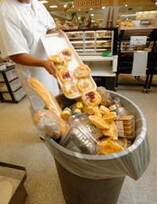 To quote Phoebe Buffay of Friends, "I'm very bendy." Well, I used to be. As a kid I could do the splits, put my feet behind my head, and rest my knees on my shoulders. Those days are long gone, but I still pride myself in my ability to bend, adapt, change, and grow. This year is testing everybody's resilience. Many people's body's can't adapt fast enough and millions people have died. Millions of jobs have been eliminated or put on hold, and supporting a family is a whole new ballgame with so many people suffering financial losses, food shortages, homelessness. The lucky minority has choices, support, the ability to shift direction and carry on, but most of us have been terrified. Waste Not Food Taxi is trying to be resilient. We stopped repackaging prepared food as a safety measure, and many of our volunteer drivers have been on hold since March 2020. Most of our donors were schools and restaurants, and when they closed, the need for our services almost dried up. At the same time, food shortages grew. Fast. We found access to additional food and have been distributing thousands of pounds to hundreds of families every week. This week, for the first time, we won't have food to distribute. It's not the end, though. It's not in my nature to ignore hunger. I feed people, one way or another. Always have, always will. We learned that the Oregon Food Bank had to suspend their Fresh Alliance program to divert resources to emergency food distribution. That's a good thing, but it left grocery stores having to throw away a lot of edible food. Other charities tried to step in, but major grocers are bound by an agreement with national food reclamation programs that require Oregon Food Bank to receive the donations. So, we met with Oregon Food Bank. We're going to work together to get those fresh food donations back into circulation while OFB continues to focus on transporting food throughout the state. Waste Not Food Taxi will use our network of volunteer drivers to pick up donations that OFB can no longer manage. We'll deliver them to OFB partner pantries and directly to recipients, primarily through partnerships with low-income housing. This will get donated food to people in need in a matter of minutes, instead of sending it from the grocer to the OFB warehouse to a pantry so a family can shop for it (on the days the pantry is open) thereby ending up with older, staler, and even rotten food. This is a whole new direction for us. It's huge, exciting, frightening, expensive, complicated, and undefined. Welcome to the post-pandemic world. We choose to take this opportunity to change for the better, because we can. Special thanks to Fred Meyer Raleigh Hills, Holly Tree Village, Whole Foods in the Pearl, and Bud Clark Commons, for being our first partners and helping us develop this program.
1 Comment
 It's been an emotional day. We learned that my husband's mom is also experiencing sudden severe health problems, like my mother. Plans are shaping up to visit both our families soon and we're isolating to ensure we're virus-free in case we're able to be in a room with them. The charity distributed over 12,000 pounds of food last week, although quite a lot went to waste due to a flawed distribution system and poor communication. Nothing irks me more than food waste, except a failure to communicate. The kids are finally getting into an apartment next week, but unemployment still hasn't come through and their funds are tight. The other kids had to postpone their wedding a second time, now waiting until next summer. And then there are the protests ... The protests are actually weighing on me the most tonight. The kids have been taking water and other supplies to protesters, even though they've been shot (non-lethal bullets). When my son arrived downtown last night, federal officers swarmed out of the justice center and surrounded his car, aiming rifles through the window into his face. They wouldn't say he was being detained, nor would they let him go. He explained that he was delivering food to a free meal program nearby, but they would not let him pass. They sprayed expired tear gas in his face, which didn't produce tears but did antagonize his respiration. The same evening, another federal officer shot a "less lethal" bullet at a protester, hit him in the head and caused a concussion, brain swelling, we don't know what all -- he underwent surgeries today. It is rumored that he's going to recover. Here's the thing. Portland is an activist city. We protest. We speak up. We read and study and pay attention. We have a higher per-capita membership in public broadcasting than most other states, let alone cities. We care about democracy. We care about the marginalized members of our community whose voices and rights and needs are ignored. At this time of national unrest, with the weakest federal leadership in our country's history, we are looking to the future. We believe we can build a better world, we can attain justice, we can help one another meet our basic needs and fundamental rights. We've been challenging the city government and the police to make some major changes, and they are hearing us. They haven't finished changing, but they've started. Our state leadership is working for fairness, for accountability, to hear both sides and recognize the need for change without resorting to anarchy. They're not perfect, but they're working. Enter Trump and his federal officers. Even though our police have been abiding by a court order to cease using crowd-control weapons against peaceful protesters, the federal teams are disregarding that order. They are fanning the flames of an already volatile situation. Federal agents causing unarmed civilians to sustain life-threatening injuries is war. It's fascism. It is so dead wrong that I can hardly contain my abhorrence. I'm writing letters to governors, senators, state and local policy makers and demanding that Oregon stand against federal interference. People are sick of watching the poor get poorer and the rich get richer. We're sick of waiting for promised unemployment funds and worried about catching up with rent and utility bills, while corporate shareholder profits matter more than human decency or even survival. We are on the verge of becoming the country we were created to escape, where money is king and speaking the truth is forbidden. We need to be awake, informed, and have a great deal of courage in the coming weeks and months. We cannot let our flawed legal and law-enforcement systems destroy our integrity and our will to reach for freedom and respect. America is on a precipice. Will we fall, or will we fly? 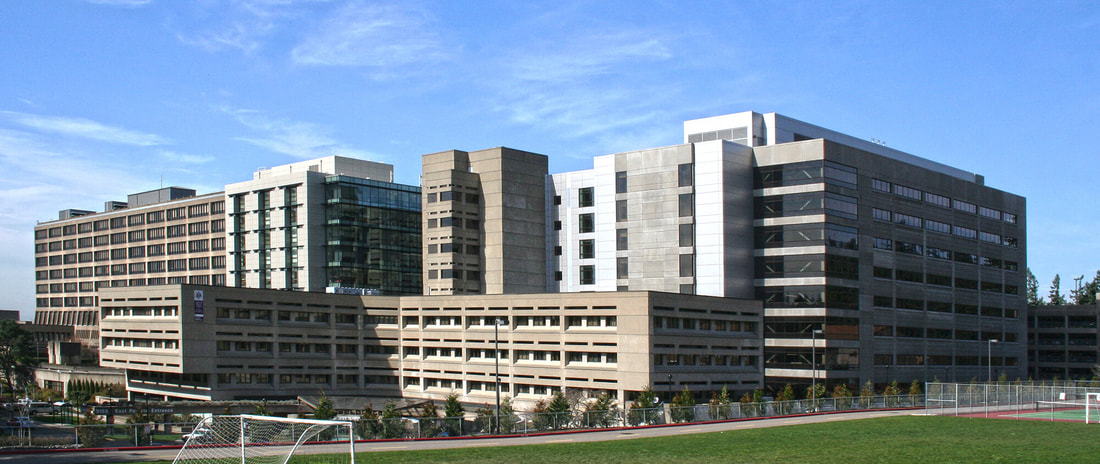 I forgot to take a mask with me yesterday. That's OK, I thought. I wouldn't be around people. I just had a pickup at the hospital, a drop-off at the low-income senior housing, and a quick run into the church. I had no idea. I did the old folks first since the van was too full of food to fit the hospital donation. The manager there gets volunteers and they unload for me. I don't have to go in the building or near anybody. And they are so grateful for the food. I might have more later, I told them, because the hospital usually has several gallons of hearty soup. It's not all that weird driving around -- there's just not traffic. Maybe a tenth of the normal number of cars, which is fine by me. A quick easy drive to the hospital, 10 minutes to downtown from there, I'd be home by lunch time. I pulled up to the loading dock as usual and saw that the bay I usual enter through was closed. I walked up the ramp and pushed the buttons. Hmm, nothing. This door is always unlocked because it's by the compactor, in use 24/7. I walked back down the ramp (a little tough going downhill with my bad knee but no biggie) and yelled into the one bay door that was partially open. Nothing. No one in sight. The regular man-door on this side of the building was locked a couple of days ago so that's not an option. What to do? I called the kitchen to let them know I was there. Could someone push the cart out to the loading dock? They didn't think so and got someone else to talk to me. "No, you can't get in over there. You have to go to a main entrance. Everybody gets their temperature taken. Go to the east pavilion." I know where that is, although I'm concerned about my ability to find and walk to the kitchen from there, and how will I get the food out? I drive around to the east pavilion and park in the passenger drop-off zone, hanging my disabled plaque just in case. I hobble in to the building, where everyone has masks on except me. I have my gloves and hair net so I feel partially prepared. The nurse at the door takes my temp without actually touching my forehead - cool! - asks me why I'm there, and doesn't know how to get to the kitchen. The volunteer at the info desk also doesn't know, except I should take the gold elevator down. This much I know. I say I'm concerned about getting the donation across the campus due to my bone and arthritis issues in my knee and feet and ask if she could call the kitchen. I wasn't thinking and had left my phone in the car. No, she's not able to call them, and she turns dismissively to answer an incoming call. People are tense, I get it. I'll find my way. There are more people walking around than I expected, but they're trying to stay six feet apart. I can see nervousness in a lot of eyes -- more patients have died from the virus here than any other hospital in the state, and our county has by far the most cases. I wonder how many people are at home watching Outbreak and Contagion. I walk past the closed cafeteria, down the hall, and across to the gold elevators that go down to the basement. The basement is a whole other world. More people but not so many masks. Rushing. Patients on gurneys outside X-ray and diagnostic imaging, outside testing departments I know nothing about. The billing department is closed. At least they have their priorities straight! Nobody is talking. The silence is eerie. There are three long parallel hallways down here. I choose the north side knowing the kitchen is sort of that way. Is it by nutrition services? Nope, most of that wing is closed. After quite a long walk I see a dish cart. I follow it and find the dish room and from there, the kitchen. Good thing I have my hairnet on so I'm allowed to make my way from dish-washing to plating to hot prep then cold prep and finally the walk-ins on the receiving side. There's Umberto, who takes me to the donation cart and pulls a few things off, adds a few things on, and pushes it toward me with a nod. Umm, Umberto? I can't push this six-foot tall cart with 300 pounds of food all the way across the hospital, up the elevator, through the east pavilion, across the lobby and out to my car, unload it, and then bring it back. I'm already struggling to walk any farther. I feel anxiety rising in my chest like I haven't felt in years. A knot in my stomach. Oh no, are my eyes tearing up? Crap. He takes pity on me and says he'll wheel it out to the loading dock. Thank God, I think, but gosh it would have been nice if we'd started there when I was AT the loading dock. I tell him it'll take at least 10 minutes for me to get there. OK. Let's do this. I go back the way I came. I think. All the hallways and doorways look the same, and there aren't many signs down here where visitors rarely come. I'm limping now and each step hurts, but I'll make it; I always do. Eventually I see the purple elevators. I don't remember passing them before but I want to get upstairs where there are fewer patients and more masks. It's pretty creepy down here, especially without my mask. I'm high risk. I don't belong here. This was a big mistake. People are dying in this building. Knute would kill me if I got the virus and died on him. Up the purple elevators, realizing that I somehow passed the gold elevators, but I make my way to the haunted lobby, past the thermometer nurse, and out to my car. What a strange sensation to get outside and suddenly feel like it's safe to breathe. My previous blog post was more spot-on than I'd realized. I wan't exposed. I wasn't exposed. My new mantra, I wasn't exposed. I sit in the driver's seat and try to pull my left leg into the car. It won't budge. I know my knee is bad. I know I should have had surgery three years ago. I know! But come on, just bend so I can go home! It takes a minute for my strong will (read stubborn hard-head) to bend and lift the knee. Back in the van I take a few deep breaths and try to calm my heart. It's under control. I don't have to limp anymore. I don't have to breathe used air anymore. It'll be OK. But I still can't quite pull myself together. Umberto is at the dock waiting for me, loads the boxes in the van, looks at me sympathetically, and asks if I'm OK. It's obvious I'm not OK, so I just tell him I doubt I'll be back until the lock-down is lifted. He understands. Home. I need to go home. No stopping at the church, no dropping off the food. I feel like I just left the opening scene of a zombie movie. Or just escaped a life sentence. Or betrayed the promise I made to my husband to be careful, be safe. My knee and foot are throbbing, but I hardly notice over the knot in my chest. It wasn't a narrow escape. I'm fine. But man, it sure feels like a narrow escape. I drive home reminding myself that there's a stay-home order, not just a request. I'm high risk. I'm non-essential. I'm an arrogant ass who has no business out here. I'm going home. And I'm staying there. Big dummy.  Surreal world all of a sudden, isn't it? There's no traffic, no place I have to be, nothing on the calendar. I'm still going out, because there's excess food everywhere and so many people who need it. But I'm doing as little as possible and being very careful. My husband worries. I have a history of respiratory disease, asthma, antibiotic resistance -- I'm the person authorities are telling to stay home. But I have gloves, masks, hand sanitizer, even hair nets. I'm staying away from people and only touching packaging, no unwrapped food. We aren't sorting donations or delivering food boxes. Donations are minimally handled, just driven from the donor to whatever large enough hunger-relief organization we can find. Getting out of the van this morning in downtown Portland, at a store I've never visited, I thought about the air. How many people have breathed this particular air? It's a creepy thought. I can avoid touching surfaces and stay six feet away from people, but I have to breathe. We all have to breathe. This is a new sensation for most of us, but not all of us. People all over the world have suffered because basic survival necessities simply aren't there. We're starting to see, for the first time, what it feels like to need to breathe but not know if the very air will kill us. To need water and not know whether it's clean. To need food and have no idea where it's been, who's touched it, whether anybody sneezed on it, whether it's fresh enough to be safe. I'm reminded of working on the Women's March on Portland in January, 2017. It wasn't just women feeling anger and frustration that the first woman president was cheated out of the position for which she's been preparing her whole life. It was women feeling unseen, unsafe, undervalued and powerless. It was traumatic for the middle-class, middle-aged, white suburban mom that I am, as it was for most of my circle, my world. But my world isn't THE world. The transgender, multi-racial, low-income activists who were working with me took the opportunity to let me know that none of this was new -- it was just new to me. They took the opportunity to educate us and used words like intersectional and woke. I am not intersectional, nor are the woman who claim to be low-income, homeless, disabled, or any combination of those fairly common sources of prejudice. Intersectionalism refers to the oppression that comes from multiple powers granted to multiple segments of society that increase the likelihood of certain people slipping through the cracks of justice. A black woman doesn't get the same treatment as a white one. Nor does a trans woman. How about the disabled African-Asian American trans woman who's face is disfigured? Most of us will find some excuse not to care about the person who is different from us in so many ways that we simply cannot relate to them. I know I've avoided the woman with no arms or legs who can only speak a little. I think if we could have a conversation I might make more effort, but I didn't. I don't see her anymore and I feel guilt for not caring enough. Her differences don't change her humanity. She was able to accomplish an extraordinary amount, running sound and video projection for church services (using a pencil in her mouth) but unable to use a toilet by herself. So this burden isn't new. It's just new FOR US. How can we embrace it and use it to help us understand what it's like to live in Flint Michigan where the water could kill you? Next door to the pig farm that blows the animal detritus across the landscape and fills the air? The poverty-stricken masses who have to take whatever food is given, whether it's safe to eat or not, and watch their babies die from lack of calories? I'm uncomfortable with the air right now. I think I'd like to buy an air purifier. I have to remember how incredibly blessed and fortunate I am that I have that option. And I owe it to myself to be aware of the people who live with this kind of fear, lack, inconvenience and powerlessness their whole lives.  We've invested a lot in the concept of beautiful spaces in the last century. In pioneer days and rural America, function almost always came before form. People worked too hard to waste time on vision appeal that had no intrinsic value. What changed after World War II? I think Americans decided the war had made us safe on a new level, and pursuing the American Dream took on new meaning. Suburbs. White picket fences. Expansive lawns. Window boxes. As our country becomes more densely populated and urban centers more predominant, we place even more value on our living space, our clothing and accessories, our curb appeal. Heck, we even built a whole industry around food plating and photography. How things look matters to us. The flip side, of course, is that anything perceived as unsightly or bothersome must be eliminated. Some idiot ages ago decided that dandelions are unsightly, even though they have far more practical uses than grass. We bought it. We sprayed and dug and treated our yards like mad to eliminate edible, medicinal, and fragrant "weeds" to make way for ornamental manicured plants. No more unsightly weeds. Garbage? Don't want to see it -- develop municipal trash collection, create landfills, build enclosures around waste containers, and heaven forbid garbage trucks should be cruising our streets when we're out there -- get the pickups done in the wee hours so we can all pretend we don't actually have garbage. All of this attention on appearances wasn't entirely awful until we started applying the idea to human beings. There have always been and will always be poor people, people who take on jobs that are "lower" in our minds, dirty people, the lower class is a supposedly classless society of equal rights and equal opportunities. Pre-WWII, pre-suburbs, people were people, no matter their economic status. (Let's not argue racism here, that's a whole other issue.) People who couldn't afford commercially-produced homes were fine living in make-shift shelters. There was nothing shameful about traveling to find work, or pitching a tent alongside a stream, or even knocking on a farmhouse door and asking if there was something one could do in trade for a meal or shelter in the barn for a night or two in bad weather. People, in general, looked out for one another. Survival was at stake, after all, and allowing another person to starve or freeze or die of a curable illness was just not OK. Now people without money are unsightly. They interfere with the artificial image of the world that we've built for ourselves. The suburbs used to be where successful people could go to live in a big house on a wide street where kids could ride their bikes to a nearby park in complete safety. Heaven forbid that anything unsightly should tarnish our fake pretty little worlds. Garbage in the street? Call the city. Under-maintained yard? Create a homeowners' association. Fast drivers? Increase traffic regulation. Do NOT mess with my fantasy world. OK, I understand the affluent among us wanting to control their environments. What I don't get is why people aren't willing to invest as much creativity and money to solve the poverty problem as they are to solve the dandelion problem. How hard is it to invest in plots of land with water, power, and waste management that people are welcome to occupy, even if for a limited time? What would it cost to provide transit service for people who can't find a safe place to sleep to a central public services facility that had enough funding to provide basic necessities? What would it cost to allow older trailers and motor homes to park on designated public land and plant concealing shrubbery around the perimeter like we do our current trailer parks? We don't seem to mind living near poverty, as long as we don't have to look at it. "We don't want THOSE people here" is as un-American as it gets. Not here? OK, tell me where. Create a space. Even garbage gets a designated space. You want to make America beautiful? Grow dandelions and eliminate lawns. Grow vegetables, not poisonous shrubs. Grow people and public services and the mental health industry, not prisons and detention centers and temporary shelters infested with bedbugs. Invest in portable shelters and public access to power and clean water. Most of all, KNOW where a person can go to survive and help them get there, if you really can't handle seeing their misfortune. I posted a Facebook status the other day, suggesting that ICE roundups have a lot in common with pre-war Nazi activity. I was referring to the practice of seeking out undocumented residents and putting them into detention facilities with no charges, no explanation, and no clear plan forward. Boy, I triggered some people. I haven't even found time to read all the comments, let alone respond. The post, very specific I thought, started conversation about the entire border crisis, immigration reform, political infighting, human decency and lack of it, prison and detention center conditions, and a lot more.
That's my main gripe about Facebook -- there's no sorting or moderating to keep a debate on a specific track. That's OK. I love social media for the access to volunteers and food recovery it provides, and Facebook is among the best. The point, though, wasn't national policy or political idealism or immigrants themselves. It's the issue of taking action without respect for the problem it's trying to solve and without a long-term goal. I understand the rationale for deporting criminals who don't have legal status. If it were that simple, I'm all in. But with the current border crisis, wouldn't ICE's resources be better spent trying to accommodate and sort out all the people clamoring at the gates? Here's the thing -- undocumented immigrants who commit violent crimes should be deported rather than tried in the US justice system. It just makes sense to save taxpayers the cost of prosecuting and detaining those trouble-makers. But a majority of the arrests in my area have been folks who failed to appear at a hearing. Of course we want immigrants to get to their hearings and proceed through the steps of acquiring legal status, but isn't tracking them down and deporting them a little too extreme? Many of them don't speak English or don't understand the process or don't have access to transportation or mail or a calendar. Failure to appear at a hearing is an honest mistake, not a violent crime, and not, in my opinion, deportation-worthy. Because the detention system is so overloaded, partly due to the increase of arrests because of the political climate, people are locked up in unsafe, unhealthy, and unconstitutional conditions. Crossing the border without documentation is a misdemeanor, not a jail-able offense. Missing a hearing automatically results in an arrest warrant, no matter what the hearing is for/about. Immigrants who don't understand this are being locked up without access to adequate food, water, shelter, medical attention, or even explanation of their circumstances. They are offered no recourse. Often their families have no idea where they are, where they're being sent, or how to contact them. Children being separated from parents and then lost is a whole other problem. My point, in posting a challenge to protect our neighbors if ICE comes for them, and in comparing that to pre-war Germany, is that the law seems secondary to the politics right now. Human rights violations are rampant. Our ability to meet the basic needs of people we detain is severely lacking, and if we can't keep them humanely, we shouldn't be picking them up in the first place. Save the prisons and detention centers for violent offenders. Once we get those under control, we can have a conversation about whether crossing the border or missing a hearing warrants the abhorrent conditions of the current facilities. I heated up some donated leftovers yesterday. The freezer was pretty full when I saw one of my Facebook groups asking for help providing food for a regular meal they serve every weeknight in downtown Portland. I responded, pulled out a bunch of bags that worked well together, and dumped them in foil pans. It took me maybe 10 minutes.
I often wonder whether anything I'm doing is making a difference. Is the food really needed? Isn't it harder to find drivers and servers and people with funds to buy supplies? Couldn't a large-scale food business provide meals much more efficiently? I have to remind myself that it's not about efficiency or simplicity. It's about community. It takes at least a dozen people every day of the week to put together these meals for about 100 people in the park. The diners may or may not be homeless, hungry, discouraged, lonely. It doesn't matter -- everybody is welcome, no questions asked. We've been doing this for a few years now, and a distinct community has developed. The guests know one another and have opportunities to visit, make new friends, ask for help, share resources. These are some of the kindest and most generous people I know, even though they have very little. They recognize that the community itself has great value. It's not just the diners who benefit. None of us could do this alone, and it's scary sometimes. We've experienced the decline of supportive communities. The more crowded our neighborhoods get, the less we know our neighbors. It's easy to feel alone among a mass of humanity. I can't lift much or stand very long and I often don't have the car. Others may not have money for gas or a container big enough or refrigerator space. But somehow, together, this meal happens, every night M-F, 6:00, rain or shine, mostly in one location but moving if that's what it takes. Whatever it takes, this group works, gathers, improvises, cares. It happens because a few people recognized a need -- not for food so much, but for community. It started with one guy who took a pot of hot soup to an under-the-bridge camp during an ice storm. I think he got beat up that first time, but he didn't quit. A few friends were inspired, then a few hundred. Now it's a network of thousands, providing those downtown dinners and picnics in other parks and delivering food and necessities to camps throughout four counties. A few other cities have started their own groups. It's called Free Hot Soup. Not a charity or club or business, just a Facebook group. Guidelines have developed, moderators have stepped up. One great man dedicated his whole truck to mobile beverage service to support the meals. The group's tool is food, but its product is community. In a world where almost everyone feels marginalized one way or another, where we've had to harden our hearts to protect them from despair, where we feel helpless against the need we see all around us, this group empowers. It finds solutions where there was impossibility. It lends a hand when all hands are already full. It stretches when need has already forced too much stretching. Community can do these things, things that individuals can't, that businesses won't, things that charities fail at, because they focus on the wrong end result. It's not food. It's care. Courage. Determination. Those human qualities that inspire and change us, that push us to accomplish greatness. The human spirit is brought alive with energy, hope, love, because people witness one another in acts of stupid, impractical, illogical, magical kindness.  Humankind has reached an important turning point. As all the graphs of population, development, and waste are now showing nearly vertical growth lines, we have to take a look at our priorities. In early human history it was simple. Our purpose was to survive. We sought food, water, and shelter, we raised children, and we joined forces to defend ourselves against nature, predators, and unknown tribes. As society became more complex, the answer to "What is our purpose?" also evolved. It's mostly qualified with "You mean besides survival?" We still acknowledge, barely, that surviving is important to us as a species, but we expect a whole lot more from ourselves and one another. This is a good thing. It inspires heroes and public servants and philosophical thought. But it also feeds our desire to do more, have more, be more, contributing to the upward slope of all those aforementioned graphs. Is it time to do less, have less, be less? Maybe. At least it's time to accept that many people are choosing that direction, and that's a valid choice. Many more are forced into simpler goals by lack of access to fundamental needs. In America, one of every eight people is food insecure, meaning they have to choose which fundamentals of survival to fight for. Do they work overtime to pay rent? Buy food and lose electricity? Search for free food and financial aid, cutting into time available for work? They certainly aren't pursuing higher education, entering politics, starting new businesses, or evaluating their purpose. They're surviving. Why do we look down on people who are surviving? Knowing there are limited resources, who are we to think that those who have more are better? If we're willing to look a little deeper, we'll find a massive subculture of hard-working, generous, intelligent people who have chosen not to participate in the more-is-better game. People who give away what they don't need, who abhor waste, who walk gently among us and on our planet. I admire people who live with less, whether by choice or circumstances. These people are connected to the true sources of life, happiness, and meaning. Each day presents an opportunity to meet their own and their neighbors' needs. There's no greed or ego or power games. There's cooperation, understanding, courage. Those of us who still over-consume, over-achieve, over-spend and over-waste can learn a lot from the poor among us. All we have to do is meet their eyes and start a conversation. 0 Comments No comments posted 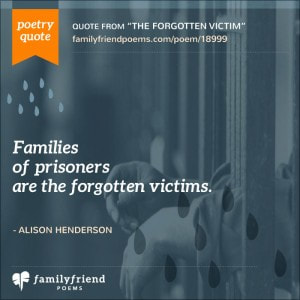 I have a relative who's between a rock and a hard place right now. Her husband is in prison, and bad as that is, it's not as life-changing as losing the income he contributed to their household. She now has 1/3 of the money she's used to, with all the debt. She can't possibly make ends meet. Because she's part of a large and supportive extended family, she's going to be OK. Some people can give her a little money. Others can help get debts forgiven. Some can call and visit and help her through the stress and emotional pain of her situation. What if she wasn't part of our family? She'd be like most people in the world when trouble hits -- broke, hungry, lonely, probably homeless, potentially resorting to some substance or other to dull the pain. It's very nearly the same impact that people suffer when they're shunned by their community. I know groups that believe shunning protects the rest of the group by getting rid of those indulging in bad behavior. One can't think too much about the shun-ee, because the inhumanity of this practice is tough to justify. Isn't that what we're doing, though, as a greater society? Shunning, ostracizing, marginalizing -- call it what you will. There are people we don't approve of, or don't understand, or are afraid of, so we choose to ignore their existence. When I moved to a conservative suburban community after I divorced, believing it to be a good environment for my kids, I was shocked to learn that some neighbors wouldn't allow their children to play with mine, because I was divorced. I don't know what they thought was wrong with that -- was I a troublemaker? Needy? Bad at relationships? A victim who would suck others into my problems? I have no idea, but we definitely weren't part of those people's definition of the neighborhood. Steering clear of people or situations we don't understand is a common practice and has been for hundreds of years. But the more urbanized our culture becomes, the more cost there is to avoidance. We need to know and care about the people near us. Everybody needs a hand once in a while. If we don't care, if we don't participate in the whole spectrum of our society, we're eventually going to have so many broken, hopeless, scarred neighbors that society as a whole will crumble. The few can't support the many. Maybe you're scared. Maybe someone married to a man in prison is uncomfortable for you. Maybe someone who suffered an injury and was over-prescribed pain medication seems weak or irresponsible. It doesn't really matter why people strike us as different. The important thing is that we overcome those differences. We need to talk to the stranger, feed the hungry, warm the un-sheltered. We don't have to put ourselves in danger, but we do have to care. If we cease to care, what are we? dMy son-in-law keeps fish. He's nuts about them. I think we have seven tanks going right now, with lots more parts and plans and ideas floating about. The big tank holds 150 gallons and is home to a few varieties, but mostly goldfish. They're showy creatures, and if you watch long enough, you start to see behavior patterns, even attitudes. There's a definite pecking order. There's a deep sense of entitlement, especially with regard to food. They've learned to swarm in the corner where food gets placed, to indicate that they want some. They are beautiful and entertaining. One night I was dozing back there, keeping an eye on the baby while the kids were out. I woke up in the wee hours and looked toward the crib to make sure my grandson was still asleep, and I saw a fish in the tank beyond the crib that scared the bejeezes out of me. I had no idea such a critter existed, let alone lived among us. He's a plecostomus named Morpheus. Apparently he's nocturnal, and he eats the algae off the glass, keeping the tank ecology balanced. Now that I know what he is, I'm fascinated. I didn't get a photo, but my first view was his belly, as he hung from the glass by his large round mouth. Seriously large. Of course he was all black in the night, a dramatic contrast to the shiny goldfish gently glowing in the dim light. He's also about ten times the size of the largest goldfish. I swear I thought I was looking at a monster or alien or some unknown invading creature. Or maybe I was dreaming. I was seriously creeped out. The plecostomus has a chameleon-like camouflage ability that helps it stay hidden in the shadows. When he's out at night, alone, fairly sure that his tank-mates are asleep, he changes from a near-solid black to an intricate scale-like pattern that blends with the rocks and gravel. He doesn't want to be seen. He may believe he's homely and a social misfit. Even when food is provided, he waits, in the dark, in the quiet shadows. The bright goldfish eat everything. When they finish their flakes, they go after the plants -- leaves, roots, everything. They pick at the rocks looking for specks that might have been missed. They compete with one another and race to grab food before the next guy can get to it. Still, Morpheus waits. Not until long after everyone else has settled down for the night does he slowly emerge. He's very careful to stay away from the others, even though they're asleep. He carefully places himself against a wall or a rock and extends his lips. These are serious fish lips. Wait, let me find a picture... He eats only what the others leave behind. He doesn't compete. He doesn't hurt anybody. He doesn't need the fresh, best food. He doesn't need attention. All he needs is to be allowed to live among the others, unobtrusive, only taking enough to survive.
Why, do you think, does this fish community remind me of Portland? |
AuthorSusie Snortum is passionate about improving society's compassion for meeting basic human needs -- food, shelter, clean water, and dignity. Archives
September 2020
Categories |
We appreciate your support!
Hours
|
Telephone
|
Email
|
ADDRESS: 17850 NW Park View Blvd, Portland, OR 97229 United States
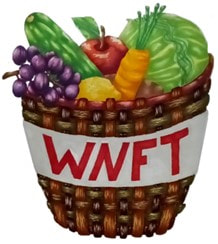
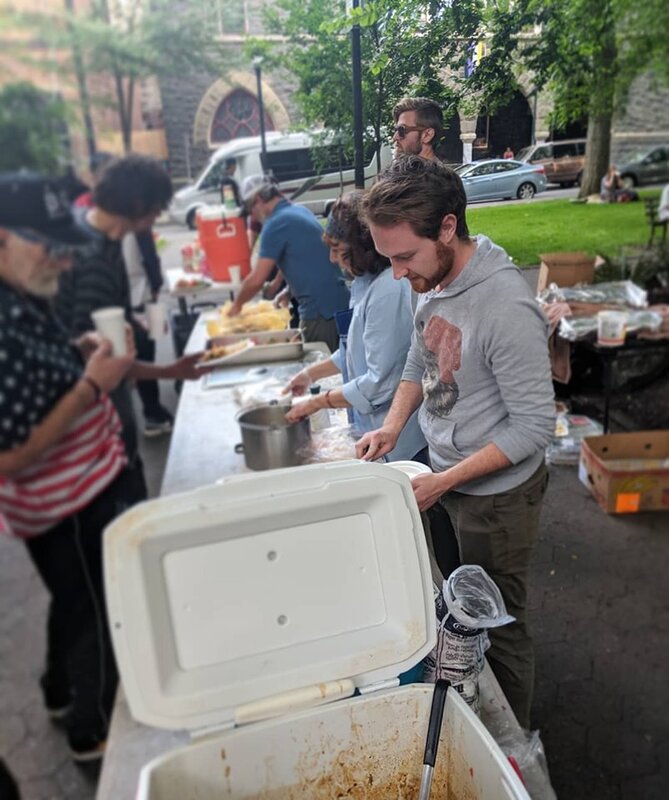
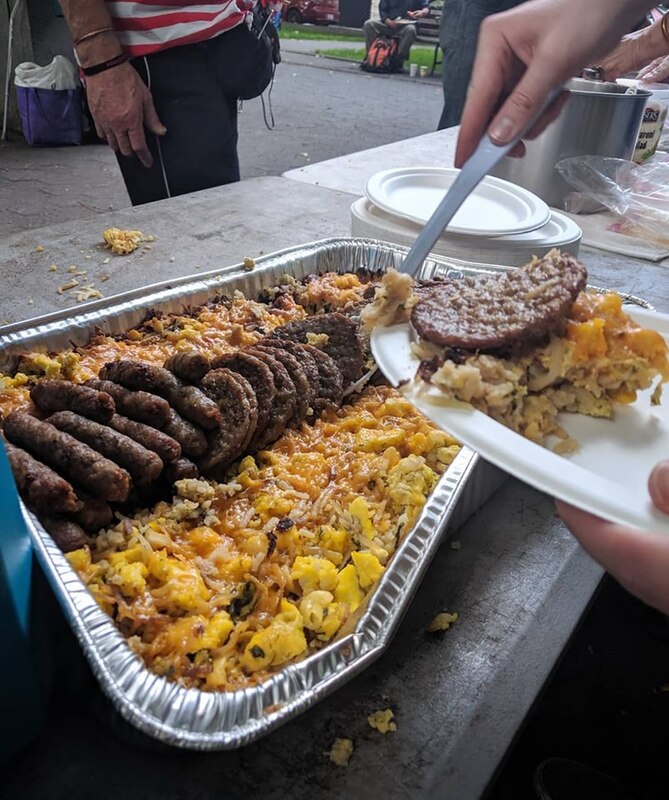
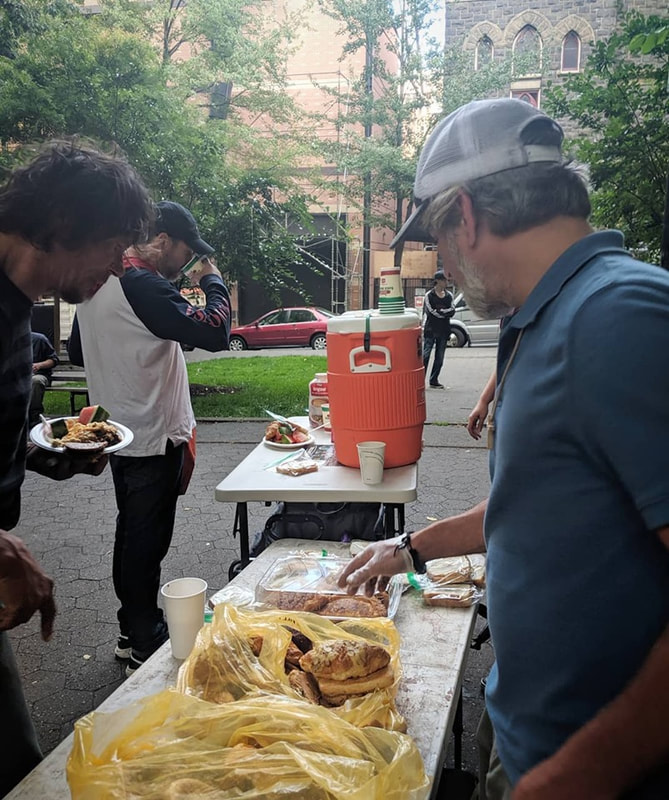
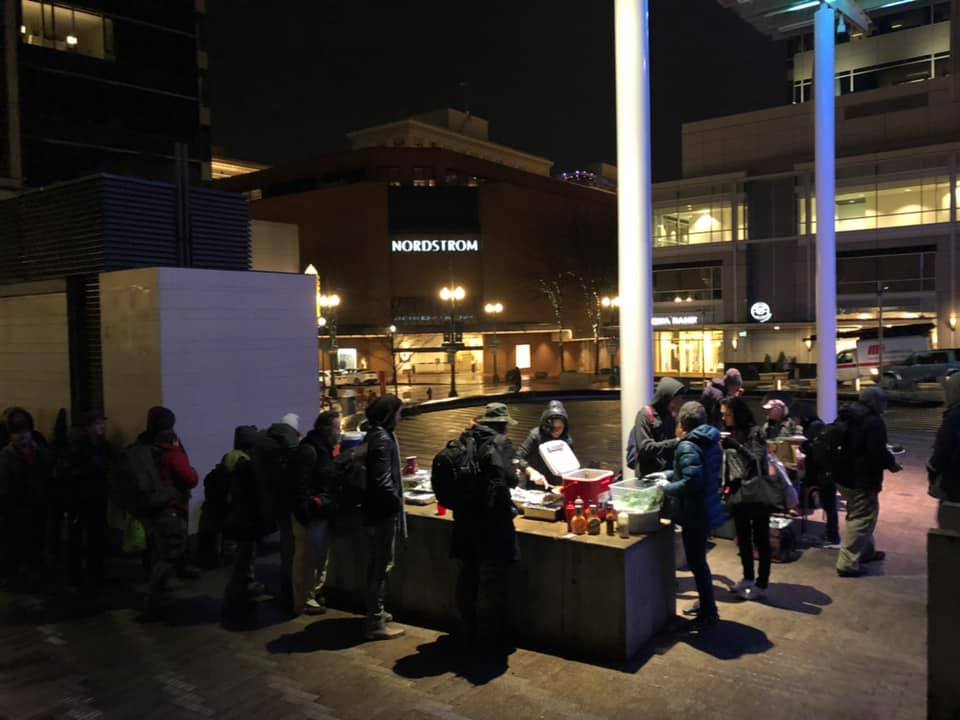



 RSS Feed
RSS Feed